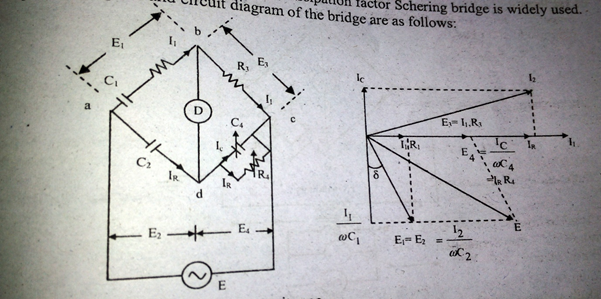For measurement of capacitance and dissipation factor Schering bridge is widely used. The phasor diagram and circuit diagram of the bridge are as follows:

Let,
At balance,
Equating imaginary and real parts,
and,
Dissipation factor
Describe the process of capacitance measurement using De Sauty’s bridge and draw the relevant phasor diagram. State the limitations of the bridge.